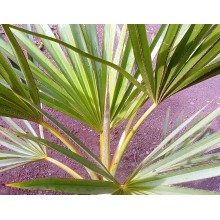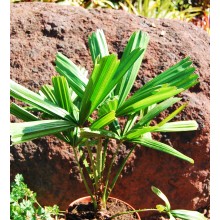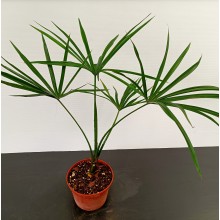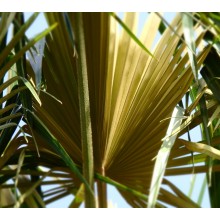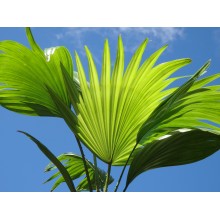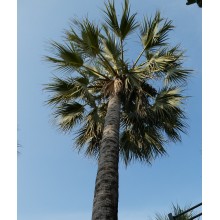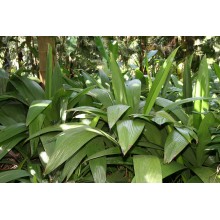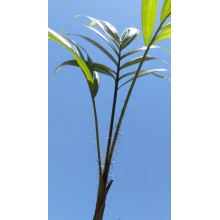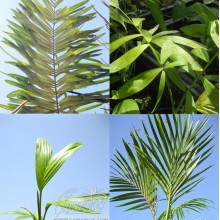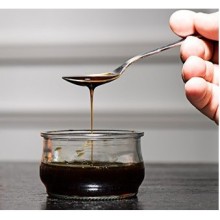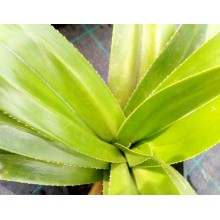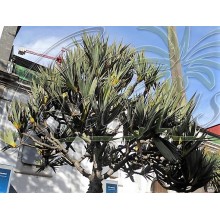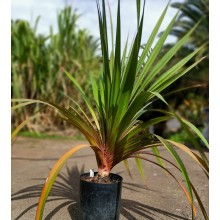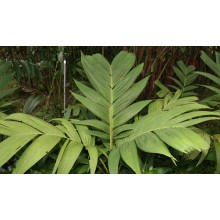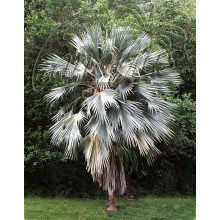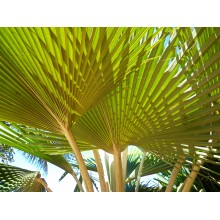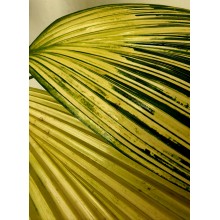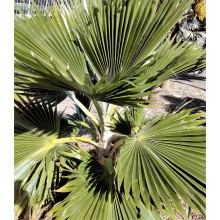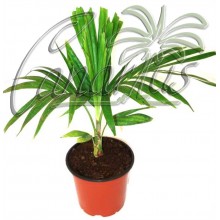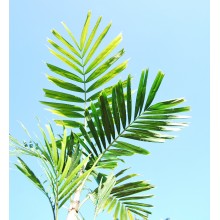Palmiers Il y a 101 produits.

La famille des palmiers, Arecaceae ou Palmae, comprend environ 2. 400 espèces indigènes aux climats chauds du monde, allant des espèces tropicales délicates aux palmiers résistant au froid. Quelques palmiers peuvent être plantés à l'extérieur en Europe centrale et tiennent bien au gel, bien en dessous de -10 ° C (14 F). Ceux qui vivent dans les pays méditerranéens peuvent se développer un plus grand nombre d'espèces à l'extérieur. Certains producteurs des zones côtières d'Europe du Sud élèvent maintenant des collections de palmiers en plein air avec plus de 100 espèces.
Canarius ne va expédier que des palmiers robustes, cultivés dans des petits pots pour réduire les coûts d'expédition et les problèmes de manutention. Il vous faut donc les transplanter dans des pots plus grands peu de temps après avoir reçu le paquet. Soyez prêt à leur donner le meilleur. Certains palmiers peuvent supporter la neige, certains peuvent vivre à l'intérieur ou dans des pots, et certains sont très tropicaux. Il suffit de choisir celui qui peut prospérer dans vos conditions.
Qu'est-ce que les palmiers peuvent se développer dans votre région? Lisez notre Liste des palmiers résistants au froid pour l'Europe. Visitez Canarius Blog pour en savoir plus sur nos palmiers. Vous verrez les photos des pépinières: des palmiers de différents types de Nouvelle-Zélande, des Bottle Palms avec une qualité supérieure de racine.
-
Latania verschaffeltii LARGE
Latania verschaffeltii LARGE
Yellow Latan Palm. Yellow colour is eyecatchy juvenile palms, as they can turn very yellow, especially in cool sunny weather.
49,30 € -
Licuala spinosa
Licuala spinosa
This is the hardiest species in the genus Licuala, resistant to drought, wind, coastal conditions and short light frosts. It is a clumping palm from SE Asia. Its leaves are fantastic, glossy pinwheels.
72,00 € -
Livistona benthamii
Livistona benthamii
This species is smaller than other livistona, with glossy drooping segments, reminiscent of the more common, and much larger, Livistona decora.
43,00 € -
Livistona fulva
Livistona fulva
Livistona fulva is a palm species, restricted in distribution to the Blackdown Tablelands in central Queensland, Australia. Livistona fulva is a tall solitary palm. In nature, it grows in open forests; in cultivation. it prefers a warm temperate climate and sunny position.
26,60 € -
Medemia argun
Medemia argun
Rare palm from the desert of Sudan and Egypt. Medemia is a relative of Bismarckia and bears elegant grey-blue arching leaves. It was considered extinct in the wild until its rediscovery in the 90's. It is still hard to find ...
48,00 € -
Molineria capitulata - Palm Grass (Curculigo capitulata)
Molineria capitulata - Palm Grass (Curculigo capitulata)
Ornamental palm-like herbaceous plant from SE Asia to Australia. Palm-grass grows in bright shade and creeps as a tall ground cover, with very showy ribbed leaves, resembling the juvenile foliage of so many palms, like Syagrus romanzoffiana.
25,44 € 31,80 €Prix réduit ! -
Oncosperma tigillarium
Oncosperma tigillarium
Everybody wants one of these palms, but few can afford to grow one to total maturity. Oncosperma palms become the most supreme landscaping specimens, with many tall slender stems and wildly exotic drooping leaves, with thousands of spines.
52,00 € -
Pack - Palmiers Pennées Subtropicaux
Pack - Palmiers Pennées Subtropicaux
Tous les palmiers ne sont pas des arbres tropicaux. Certaines espèces proviennent de régions subtropicales et résistent aux faibles température.Toutes ces espèces sont des palmiers pennées, ils peuvent pousser partout où il ne gèle pas souvent et peuvent être plantés dehors dans les climats méditerranéens. Ex: Chamaedorea klotschiana, Allagoptera...
63,33 € 74,50 €Prix réduit ! -
Palm Honey - Phoenix canariensis syrup
Palm Honey - Phoenix canariensis syrup
Palm Honey or Palm Syrup is an edible sweet syrup produced produced in the Canary Islands from the sap of the native palm tree, by tapping the tree in a sustainable way. It is thinner and darker than bee-honey. Bo th are natural sweeteners, but there is a big difference in taste and content. Try it on Desserts, Fresh Cheese, Liqueurs, or Sweetener for Tea.
19,40 € -
Pandanus dubius
Pandanus dubius
This is one of the most ornamental species in the genus Pandanus. Leaves are very wide, deeply plicated with moderate spines and a drip-tip appendix. All is very elegant, of a deep and glossy green.
46,50 € -
Pandanus utilis
Pandanus utilis
Palm-like tree of unreal architecture, native to Madagascar and Mauritius. A symbol of tropical gardening.
56,00 € -
Pandanus utilis Large
Pandanus utilis Large
Palm-like tree of unreal architecture, native to Madagascar and Mauritius. A symbol of tropical gardening. Long specimen with 6cm of diameter and 1,1 meters long.
92,60 € -
PInanga coronata 'Kuhlii'
PInanga coronata 'Kuhlii'
Very ornamental and colourful small clumping palm from SE Asia. Leaves and sheaths have different shades of green, mottled with yellow. The young new leaf is mottled in red-maroon.
35,20 € -
Pritchardia hillebrandii 'Blue Moon'
Pritchardia hillebrandii 'Blue Moon'
Compact, silvery-blue form of Pritchardia hillebrandtii, with black fruits, originated in a small islet in Hawaii. Please be patient, this plant will not show any blue until late.
34,70 € -
Pritchardia minor
Pritchardia minor
This is the smallest of all Pritchardia species! It is endangered and native to the island of Kauai, at 500-1300 m elevation, so it is able to grow in cool conditions.
42,00 € -
Pritchardia remota 'Variegata'
Pritchardia remota 'Variegata'
Prithchardia remota comes from a very harsh island in Hawaii and it is possibly the best for mediterranean conditions. This year we have spotted a few variegated Pritchardias in a batch of P. remota. h= 70 cm
112,20 € 132,00 €Prix réduit ! -
Pritchardia thurstonii
Pritchardia thurstonii
Pure beauty lives in this small to medium sized fan palm. Leaves are beautifully stiff and plicated as in an accordeon. Fruits are held in small bunches hanging on long, arching rachis. This palm grows wild in the most remote islets in the pacific.
29,30 € -
Ptychosperma elegans
Ptychosperma elegans
This is one of the most classic and beautiful mid sized palms, from Australia. They are "elegant" in all their parts, just as their name says.
34,70 € -
Ptychosperma macarthurii
Ptychosperma macarthurii
Popular clumping palm in tropical and suptropical countries. Ptychosperma macarthurii is native to NE Australia and New Guinea.
72,00 €
Pour le moment, il ya peu de produits dans cette catégorie Palmiers

















